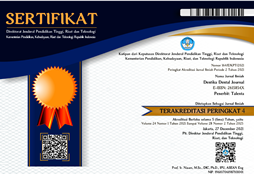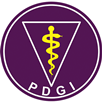Publisher:
Submissions
Submission Preparation Checklist
As part of the submission process, authors are required to check off their submission's compliance with all of the following items, and submissions may be returned to authors that do not adhere to these guidelines.Privacy Statement
Dentika Dental Journal values our relationship with you and recognises the importance of respecting and protecting your personal information and privacy. Therefore, your privacy is very important to us. This policy (together with any other resources referred in it) set out the basis on which any personal information you provide to us (or data we collect about you from other sources) will be processed (meaning collected, stored and otherwise used) by us.
Dentika has developed this privacy statement for visitor / user, to demonstrate its commitment to privacy on the internet. This Privacy Statement applies to the online collection of personal information on the Site.
Dentika Dental Journal is committed to protecting any personal information that you may provide to us about yourself on this website. For the purpose of this Privacy Policy, “Personal Information shall mean any information that can be linked to a specific individual including without limitation, information such as name, address, contact number, email address. The information requested is for the sole purpose of database. It will be kept confidential and no commercial use is intended. Any personal information received by Dentika will only be used to process and publish your manuscript.
Dentika Dental Journal will take reasonable technical and organisational precautions to prevent the loss, misuse or alteration of your personal information. Information that Dentika collects may be stored and processed in and transferred between any of the countries in which Dentika operates to enable the use of the information in accordance with this privacy policy.
Views expressed in articles / research papers / manuscripts are personal opinion of the author / contributors are in no sense, neither the journal nor any member of the journal is responsible. In case any research paper / article are found previously published anywhere else, the author / contributor will be entirely responsible. There would be no responsibility of any member of the journal.
If you have any questions about this privacy policy or Dentika Dental Journals treatment of your personal information, please send an email to dentika_journal@usu.ac.id













